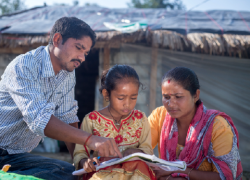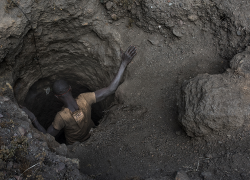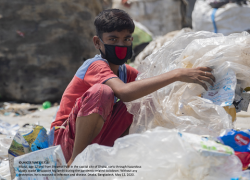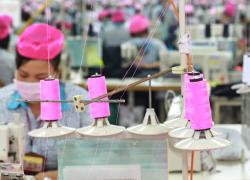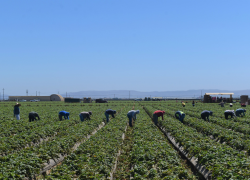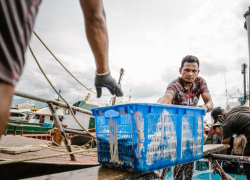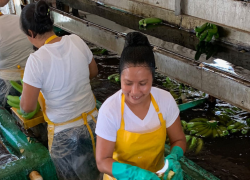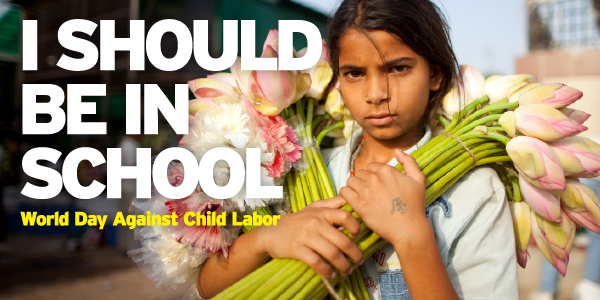
As of 2020, an estimated 160 million children worldwide were engaged in child labor — a 6.5 million increase since 2016. And that number is likely to grow, given the long-term and unequal impacts of the pandemic on vulnerable families and children. Nearly half of these children are involved in hazardous work, carrying heavy loads and wielding machetes on farms, scavenging in garbage dumps, working in mines or being subjected to physical, emotional and verbal abuse as domestic servants. Seventy percent of global child labor is concentrated in the agriculture sector, with an estimated 108 million children working on farms and plantations.
There is no one-size-fits-all solution to ending child labor; responses must be adapted to the diverse environments in which child labor occurs. All governments can take decisive actions to begin reversing the disturbing upward trend in child labor. First and foremost, governments must adopt robust child labor laws and allocate sufficient resources to enforce them effectively. Second, supply chain transparency and accountability is essential — all the way from the supermarket, the car lot or the fast fashion racks right down to the field, the mine and the factory. We also need to effectively enforce trade measures that hold our trading partners to international standards.
While many countries are moving in the right direction by strengthening labor laws and promoting minimum age protections, significant gaps remain. Of the 131 countries included in the U.S. Department of Labor's 2021 Worst Forms of Child Labor report, 35 have a minimum work age below 15, and 16 countries have no minimum age for hazardous work.
In our international reporting, only 36 countries have an adequate number of labor inspectors, and just 88 conduct routine labor inspections. Of our 2,000-plus suggested government actions based on our findings, 40% are about strengthening labor law enforcement.
While child labor is particularly prevalent in the world's poorest countries, very few countries are untouched. Even in a relatively wealthy country like the United States, the U.S. Department of Labor found a 69% increase in the number of children working illegally since 2018. The number of children employed illegally in the U.S. increased by 37% in 2022 alone. Children are working in entirely inappropriate and often hazardous workplaces, including meatpacking plants, construction sites and auto parts factories.
Companies know child labor is wrong, but the moral argument often loses out to economic incentives. The consequences of being caught exploiting children must be onerous enough to deter violations from occurring in the first place. Still, in the U.S., the civil money penalty for a child labor violation under current law is $15,138 per violation, and several states are rolling back child labor laws, which will further jeopardize children's well-being and make it easier for companies to exploit them.
Companies must be held accountable by prohibiting child labor in their operations and supply chains. Understanding complex global supply chains can be daunting, but that is not an excuse for inaction. Establishing robust compliance systems, assessing vulnerabilities to abuse, increasing auditing budgets and requiring all suppliers and subcontractors to provide third-party certification that they do not use child labor, are just a few concrete actions that companies can take.
And these steps are just as important in the United States of America as in the rest of the world. When employers are in compliance with child labor laws, respect their workers’ choice to form a union or bargain collectively, when they offer decent work, a safe and healthy workplace and a living wage, families, communities and the entire workforce have more stability and are less likely to resort to child labor.
What can you do to address child labor? Help hold employers and corporations accountable. Of course, you can and should check labels or websites to see where and how goods are made. If the information isn’t readily available, don’t be afraid to ask questions. There is increasing pressure on companies to take responsibility for labor and human rights conditions throughout their supply chains. Consumer concerns, investigative reporting and social media all contribute, as do government requirements for disclosure and compliance with international norms.
We need stronger child labor laws, consistent enforcement and clear messages from the government at every level. There are choices all of us can make and actions we can take to help end the exploitation of children.
To learn more about these issues join us for a discussion of collective action being taken to address child labor here at home and abroad on World Day Against Child Labor June 12, 2- 3:15 p.m. ET. Register to join in person at U.S. Department of Labor headquarters in Washington, D.C., or tune in to our livestream at dol.gov/live.
Thea Lee is the deputy undersecretary for international affairs. Jessica Looman is the principal deputy administrator of the Wage and Hour Division.

 U.S. Department of Labor Blog
U.S. Department of Labor Blog
